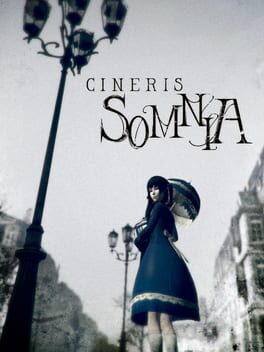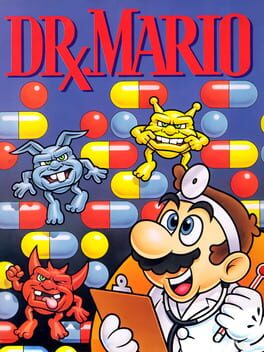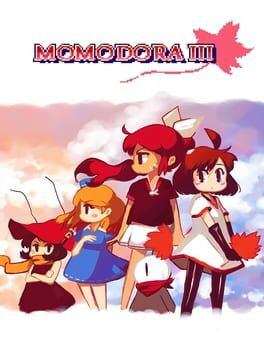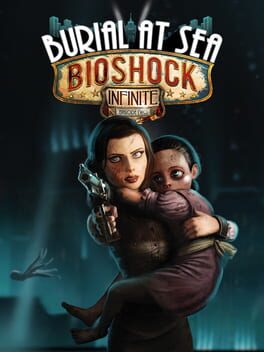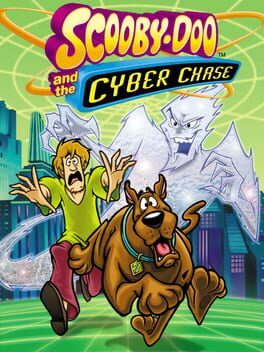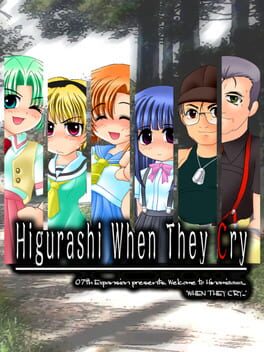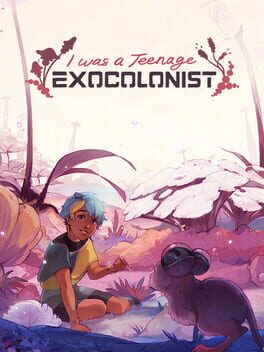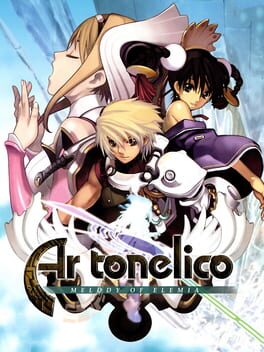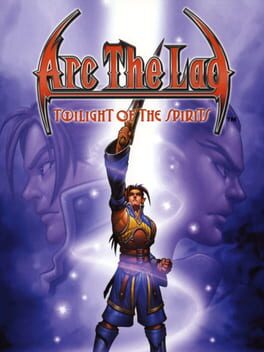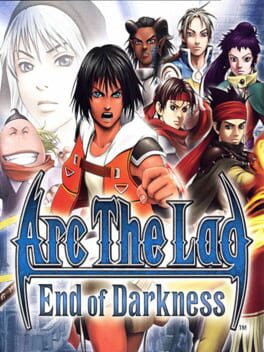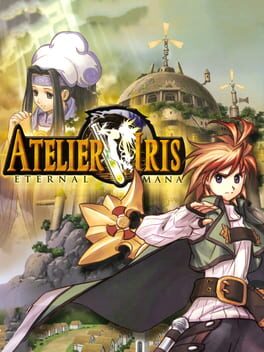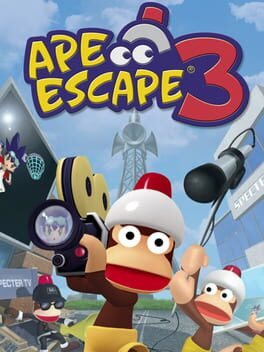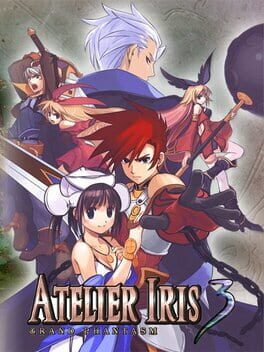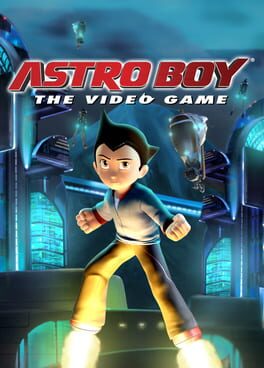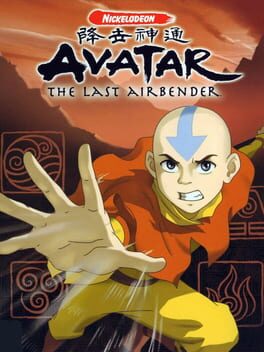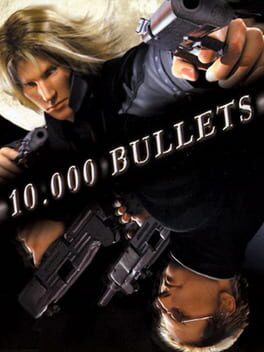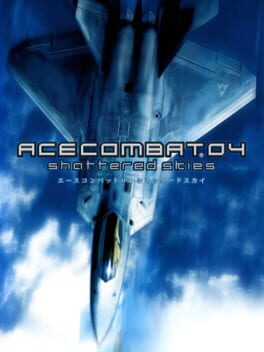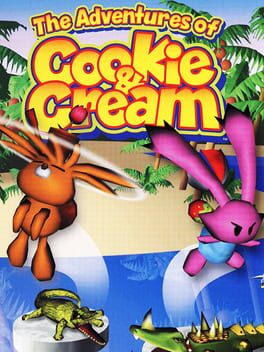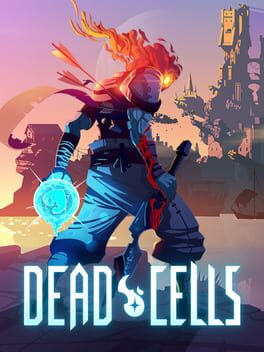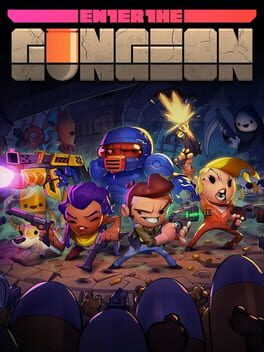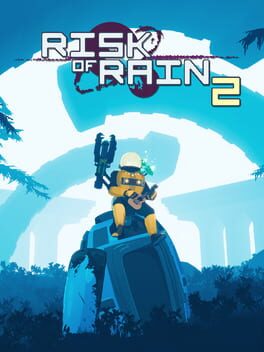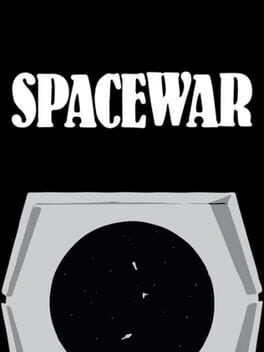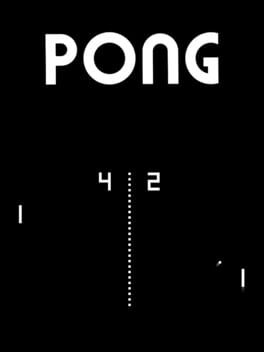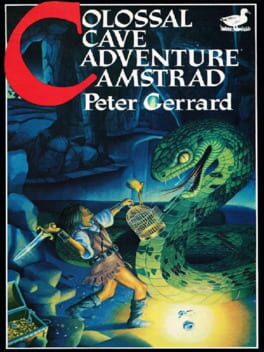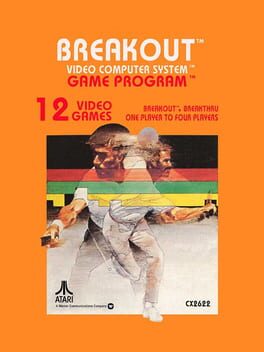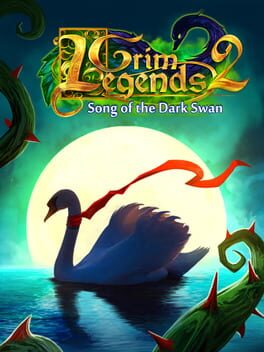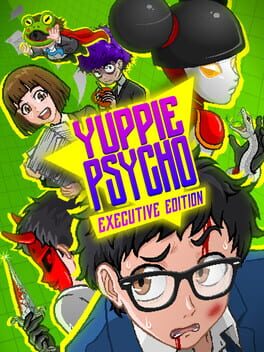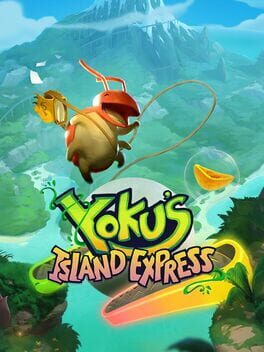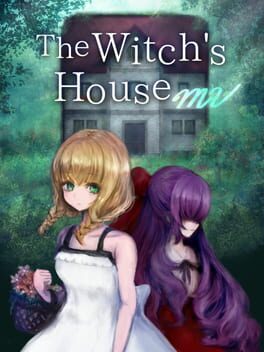35 reviews liked by mxdnt
Review in progress:
First Impressions
Pretty sure I'm only like 25% of the way through this beast, but I just wanted to get some initial thoughts out since it's been getting me to think a lot, and I've been enjoying my time with it pretty thoroughly! First off, this game looks and sounds gorgeous, and that's coming from someone who's generally not huge on anime artstyles! I'm a massive sucker for hand painted sprites and damn does Vanillaware deliver— the soundtrack goes insaneo style too. ALSO, I fw the mech combat hard, and I'd honestly be perfectly content if that's all 13 Sentinels was.
However, what I more so wanted to talk about was this game's narrative, an aspect of it I'm a little conflicted on, at least as of writing this. To specify, I'd like to speak more of its writing's quality than of my personal experience with it, because regardless of if it amounts to little more than pulpy anime bullshit, I can't lie, I've been getting quite a kick out of following the ludicrously convoluted paper trail. I think my final verdict on 13 Sentinels' story will be contingent on whether it uses its unconventional structure for something meaningful, or if it's just confusing for confusing's sake (and knowing the GOAT Yoko Taro praised it, I'm hopeful).
Something I'm a little confused by is the ratio of information 13 Sentinels leaves ambiguous to that which it just directly tells you. I'm usually a pretty big advocate for show-don't-tell, but when a piece of media throws 30 wacky new keywords at you every second, I think it's totally understandable and generally advisable to include some exposition, or even a glossary. 13 Sentinels is an anime mystery game so it obviously would fall into that camp, and does indeed compensate with a much appreciated and cohesive glossary (and at that, a pretty clever one in that you unlock entries as you go). However, for how happy the game is to leave you in the dark on major plot details, it can be surprisingly heavy handed when it comes to the more digestible ones.
For instance, in the scene that introduces Megumi (whose plotline has probably interested me the most so far), she's walking and talking with her friend Tomi, and then Tomi basically just turns to the camera and says "This is my good friend Megumi Yakushiji. She's always been the Hopeless Romantic character archetype, probably because she's so Shy personality trait." I'm exaggerating a little of course, but what I mean is that it feels really awkward and unnatural to blatantly exposition dump during a casual conversation between high schoolers, especially when that exposition is simply one of said student's personality, something that was already being established organically. Now, it's honestly very possible that the tropeyness of the cast is actually a highly intentional David Lynchian stroke of genius, but when the rest of Megumi's plotline consists of contracting with a talking cat to shoot witches with a magical gun in order to revive her deceased boyfriend from a different era, and none of THAT is explained, I'll admit this kind of thing feels a little off— probably just some clunky translation, idk. When basic information is so bluntly communicated in a story otherwise seemingly apathetic to one's understanding of it, there are times when it's hard to tell whether the game actually respects its players' intelligence.
At least, going directly into another time traveling RPG immediately after Chrono Trigger gives me a little whiplash. On one hand, I think complexity is great for a story, but it also needs to be earned, well placed. CT's story is instantly very effective because of its simplicity, but 13 Sentinels' seems much more of a slow burn. With that being said, I do really appreciate how the characters themselves generally don't seem to know what the fuck is happening either, and it makes them a lot easier to connect with. On the surface, they may all be defined by an archetypal personality trait and a like and dislike or two, but with the game's focus on story and its 40 some hour runtime, I'd have to imagine they go a little deeper than that once they're better established.
13 Sentinels is as niche as it is a vibe, and from what I can tell, its opening chapters are a weeb-level filter if nothing else. Since it's as well received as it is, I think I'll just have to swallow my pride and trust VW to cook, but nonetheless it's pretty damn fun. :)
First Impressions
Pretty sure I'm only like 25% of the way through this beast, but I just wanted to get some initial thoughts out since it's been getting me to think a lot, and I've been enjoying my time with it pretty thoroughly! First off, this game looks and sounds gorgeous, and that's coming from someone who's generally not huge on anime artstyles! I'm a massive sucker for hand painted sprites and damn does Vanillaware deliver— the soundtrack goes insaneo style too. ALSO, I fw the mech combat hard, and I'd honestly be perfectly content if that's all 13 Sentinels was.
However, what I more so wanted to talk about was this game's narrative, an aspect of it I'm a little conflicted on, at least as of writing this. To specify, I'd like to speak more of its writing's quality than of my personal experience with it, because regardless of if it amounts to little more than pulpy anime bullshit, I can't lie, I've been getting quite a kick out of following the ludicrously convoluted paper trail. I think my final verdict on 13 Sentinels' story will be contingent on whether it uses its unconventional structure for something meaningful, or if it's just confusing for confusing's sake (and knowing the GOAT Yoko Taro praised it, I'm hopeful).
Something I'm a little confused by is the ratio of information 13 Sentinels leaves ambiguous to that which it just directly tells you. I'm usually a pretty big advocate for show-don't-tell, but when a piece of media throws 30 wacky new keywords at you every second, I think it's totally understandable and generally advisable to include some exposition, or even a glossary. 13 Sentinels is an anime mystery game so it obviously would fall into that camp, and does indeed compensate with a much appreciated and cohesive glossary (and at that, a pretty clever one in that you unlock entries as you go). However, for how happy the game is to leave you in the dark on major plot details, it can be surprisingly heavy handed when it comes to the more digestible ones.
For instance, in the scene that introduces Megumi (whose plotline has probably interested me the most so far), she's walking and talking with her friend Tomi, and then Tomi basically just turns to the camera and says "This is my good friend Megumi Yakushiji. She's always been the Hopeless Romantic character archetype, probably because she's so Shy personality trait." I'm exaggerating a little of course, but what I mean is that it feels really awkward and unnatural to blatantly exposition dump during a casual conversation between high schoolers, especially when that exposition is simply one of said student's personality, something that was already being established organically. Now, it's honestly very possible that the tropeyness of the cast is actually a highly intentional David Lynchian stroke of genius, but when the rest of Megumi's plotline consists of contracting with a talking cat to shoot witches with a magical gun in order to revive her deceased boyfriend from a different era, and none of THAT is explained, I'll admit this kind of thing feels a little off— probably just some clunky translation, idk. When basic information is so bluntly communicated in a story otherwise seemingly apathetic to one's understanding of it, there are times when it's hard to tell whether the game actually respects its players' intelligence.
At least, going directly into another time traveling RPG immediately after Chrono Trigger gives me a little whiplash. On one hand, I think complexity is great for a story, but it also needs to be earned, well placed. CT's story is instantly very effective because of its simplicity, but 13 Sentinels' seems much more of a slow burn. With that being said, I do really appreciate how the characters themselves generally don't seem to know what the fuck is happening either, and it makes them a lot easier to connect with. On the surface, they may all be defined by an archetypal personality trait and a like and dislike or two, but with the game's focus on story and its 40 some hour runtime, I'd have to imagine they go a little deeper than that once they're better established.
13 Sentinels is as niche as it is a vibe, and from what I can tell, its opening chapters are a weeb-level filter if nothing else. Since it's as well received as it is, I think I'll just have to swallow my pride and trust VW to cook, but nonetheless it's pretty damn fun. :)
Dragon's Dogma II
2024
as vezes a gente nem percebe que as raízes são fortes... dragon's dogma, em 2012, junto com dark souls deve ter afetado a maneira que meu cérebro funciona ao jogar video game de formas irreparáveis. eu não estava armado nessa época, eu não tinha vocabulário, eu não sabia o que pensar durante o jogo além de "diversão" e as percepções básicas. dark souls me acompanhou a vida toda depois disso - a primeira vez que eu escrevi foi justamente dele! mas dragon's dogma ficou lá no cantinho escondido -não joguei dark arisen!- passei 200 horas nele e sendo sincero nunca pensei a fundo no porquê.
e agora depois de uma jornada de 68 horas e 139 dias (in-game) eu entendo tudo, é óbvio que DD foi feito pra mim, todas as Decisões que eu sou obcecado são feitas com a maior confiança do mundo, eu amo jogo de andar por aí, de se planejar e sair numa caminhada que só deus sabe o que vai acontecer, eu amo gerenciamento de recursos como o poder de teleportar, eu amo limites de tempo e quando achei que não iria criar um vínculo com a história "principal" (não conte para o pessoal da página do jogo que a verdadeira história principal são momentos que acontecem enquanto você está caminhando) ela também é uma história que brinca com meus temas favoritos. agora vou descansar por uns meses, deixar marinar e jogar o dark arisen sabendo que dessa vez estou armado com as palavras certas pra dar o carinho que ele merece.
e agora depois de uma jornada de 68 horas e 139 dias (in-game) eu entendo tudo, é óbvio que DD foi feito pra mim, todas as Decisões que eu sou obcecado são feitas com a maior confiança do mundo, eu amo jogo de andar por aí, de se planejar e sair numa caminhada que só deus sabe o que vai acontecer, eu amo gerenciamento de recursos como o poder de teleportar, eu amo limites de tempo e quando achei que não iria criar um vínculo com a história "principal" (não conte para o pessoal da página do jogo que a verdadeira história principal são momentos que acontecem enquanto você está caminhando) ela também é uma história que brinca com meus temas favoritos. agora vou descansar por uns meses, deixar marinar e jogar o dark arisen sabendo que dessa vez estou armado com as palavras certas pra dar o carinho que ele merece.
Cineris Somnia
2018
An incredibly gorgeous and atmospheric title.
This game is essentially a walking simulator disguised as an exploration puzzle game and takes place over the course over several small short stories.
The stories themselves are ok at best, they’re simple and relatively straightforward without much thematic connection or complexity but what I really enjoy this game for is its phenomenal art direction and sound design.
It’s incredibly clear just looking at the game that it did not have the highest budget nor did many people work on it. The models are relatively low quality with stiff animations, and occasionally characters actually start clipping through their clothes and the objects near them in animations. What makes this game a visual treat is really the phenomenal lighting and color palettes utilized in the various chapters. The lighting mostly uses standard fuzzy glows but makes it look particularly beautiful is its contrast against the mostly darker colored environments and player character. Because of the darker areas the lighting glows and pops out more. Sunbeams and moonlight function mostly the same except when interacting with liquids, which start to shine in contact. When combining these aspects you have some visuals I really love; a spiral staircase being illuminated from light above as glowing rose petals fall to the ground; blood positively sparkling under the moonlight reflected by a twilight blue greenhouse; a spotless white sanitorium illuminated from windows to the courtyard, silent bar your footsteps and the chirps of birds outdoors; a forest enveloped in a dark fog illuminated only by the glow of cyan butterflies; the game is full of locations like this and these are only a few of my favorites.
The sound design is also great and adds a fair amount to the experience. The OST is mostly ambient tracks played by the piano and typically has a gentle, occasionally somber feel to it. The sound effects are more pronounced and add a fair amount; the drip-drop of blood falling off a table from an overturned teacup; the bustling of curtains in the wind; the pitter-patter of fish out of water; playing the game without sound would remove so much of it.
So yeah, it’s a pretty neat game. If you care at all about either dark or joyous atmospheres in games without much else substance present, then I think you’d enjoy it.
This game is essentially a walking simulator disguised as an exploration puzzle game and takes place over the course over several small short stories.
The stories themselves are ok at best, they’re simple and relatively straightforward without much thematic connection or complexity but what I really enjoy this game for is its phenomenal art direction and sound design.
It’s incredibly clear just looking at the game that it did not have the highest budget nor did many people work on it. The models are relatively low quality with stiff animations, and occasionally characters actually start clipping through their clothes and the objects near them in animations. What makes this game a visual treat is really the phenomenal lighting and color palettes utilized in the various chapters. The lighting mostly uses standard fuzzy glows but makes it look particularly beautiful is its contrast against the mostly darker colored environments and player character. Because of the darker areas the lighting glows and pops out more. Sunbeams and moonlight function mostly the same except when interacting with liquids, which start to shine in contact. When combining these aspects you have some visuals I really love; a spiral staircase being illuminated from light above as glowing rose petals fall to the ground; blood positively sparkling under the moonlight reflected by a twilight blue greenhouse; a spotless white sanitorium illuminated from windows to the courtyard, silent bar your footsteps and the chirps of birds outdoors; a forest enveloped in a dark fog illuminated only by the glow of cyan butterflies; the game is full of locations like this and these are only a few of my favorites.
The sound design is also great and adds a fair amount to the experience. The OST is mostly ambient tracks played by the piano and typically has a gentle, occasionally somber feel to it. The sound effects are more pronounced and add a fair amount; the drip-drop of blood falling off a table from an overturned teacup; the bustling of curtains in the wind; the pitter-patter of fish out of water; playing the game without sound would remove so much of it.
So yeah, it’s a pretty neat game. If you care at all about either dark or joyous atmospheres in games without much else substance present, then I think you’d enjoy it.
Dr. Mario
1990
Momodora III
2014
Pelo menos a história termina bem amarradinha no fim dessa DLC.
Em termos de gameplay é bem desagradável. Nesse Ep., Bioshock Infinite foca no Stealth, mesmo sendo horrível nisso e não tendo um bom design de fases preparado pra isso. Em alguns momentos, eu só escolhi passar correndo por geral direto pro objetivo e lá me esconder até desistirem de me procurar.
Em termos de gameplay é bem desagradável. Nesse Ep., Bioshock Infinite foca no Stealth, mesmo sendo horrível nisso e não tendo um bom design de fases preparado pra isso. Em alguns momentos, eu só escolhi passar correndo por geral direto pro objetivo e lá me esconder até desistirem de me procurar.
Eu tinha planos para esse mês, mas nunca imaginaria que eu estaria passando os últimos dias dele consumindo os filmes de Scooby Doo que fossem do meu interesse, e a surpresa que foi ao descobri que tinha um jogo especifico para um dos filmes que estavam na lista, decidi experimentar e curti muito, os controles truncados, os gráficos poligonais, a dublagem em inglês, tudo que poderia ser visto de forma negativa, foi oq me fez continuar a jogar, eu genuinamente amo essa estética
A única coisa que posso reclamar eh o fato dos controles se tornarem muito ruins em partes especificas do jogo, mas ainda aprecio o fato de toda fase ter pelo menos uma mecânicazinha diferente, foi muito bom joga isso
A única coisa que posso reclamar eh o fato dos controles se tornarem muito ruins em partes especificas do jogo, mas ainda aprecio o fato de toda fase ter pelo menos uma mecânicazinha diferente, foi muito bom joga isso
Pretty well put together mystery. Each chapter gives slight clues to work with on slowly figuring out some parts of the mystery, but nothing is ever so huge or obvious you can make any deduction with absolutely certainty, and I think that’s the goal mysteries should strive for.
Additionally some of the narratives for the individual chapters are quite middling, with slow pacing particularly in the early to middle portions, but each Question Arc chapter is less about attempting to be their own complete narrative and rather fulfill a specific purpose in the mystery and the overarching narrative of all the chapters.
Also Hello! from the original soundtrack fucks so hard idk why they’d replace it in the steam release…
Additionally some of the narratives for the individual chapters are quite middling, with slow pacing particularly in the early to middle portions, but each Question Arc chapter is less about attempting to be their own complete narrative and rather fulfill a specific purpose in the mystery and the overarching narrative of all the chapters.
Also Hello! from the original soundtrack fucks so hard idk why they’d replace it in the steam release…
I’m a big proponent of the idea that “limitations breed creativity.” That’s part of the reason I love indie games so much! Gorgeous photorealistic graphics and hundreds of hours of gameplay are all well and good, but with a low budget comes a willingness to experiment, to be rough around the edges in a way that connects with its target audience with a specificity that something with a bigger budget could never manage. That ambition is what I see most in I Was a Teenage Exocolonist.
IWATE is, first and foremost, a coming-of-age story. Mechanically and thematically I’d liken this game to Citizen Sleeper, but unlike that game which takes place over a couple months, IWATE is set over the course of 10 years. Your protagonist, Sol, is only 10 years old when their spaceship, the Stratos, arrives on the alien planet Vertumna. In this new and dangerous world, Sol navigates their teen years alongside the foundation of their colony.
The breadth of IWATE’s themes is astounding. The inter- and intrapersonal journeys had while growing up juxtapose the material conditions of the colony and their settlement in new territory, with environmentalism and colonization being the primary ethical issues explored. As a teenager, when can we trust authority? As a civilian, when can we trust those in charge? What do we do when those stupid, no-good, bossy adults are the ones waging war? What about when community leaders neglect the needs of the next generation they’re meant to foster? Being a teenager is hard, but try going through puberty and adolescence in the uncharted alien wilderness. Through these topics and more, IWATE masterfully weaves together sci-fi and coming-of-age into something greater than the sum of its parts.
\\ (The following section has minor spoilers.)
During your first playthrough, you eventually learn that Sol is in a time loop. This is, in part, a diegetic justification for New Game+; it’s not like, say, Undertale, where the true story can only be unearthed through repeat playthroughs. If you’re satisfied, you can put down IWATE after your first playthrough. But you’d be missing out on a lot.
For Sol, this time loop is a blessing, not a curse. IWATE holds a great love and empathy for humanity and our potential. You can’t do everything in a single playthrough. There’s no “Golden” end, where you max out every stat, befriend everyone, and lead everyone to a perfect tomorrow. Instead, you’re encouraged to construct the lives Sol could lead, the different people they could grow up to be. Each life is equally as valid as the next. What role will you play for your community?
\\ (Spoilers end here.)
Of course, it’s only natural that IWATE falls into some pitfalls with its limitations. The more choices there are for a player to make, the more choices there are that need to be accounted for. I wish there were more ways for characters to die, I wish there were more unique endings instead of career endings, I wish romance didn’t fade into the background after you’ve gotten into a relationship. I wish the team had more resources to really flesh out everything I’ve mentioned and more. But if they had had those resources from the start, would I Was a Teenage Exocolonist exist? Limitation breeds creativity, after all.
I’ve played through IWATE twice, and I plan to play it many more times in the future. It’s ambitious and its breadth of scope is breathtaking. I haven’t discovered everything and I don’t think I ever will, but it’s that sense of infinite possibility that compels me to see what else I Was a Teenage Exocolonist has to offer.
“The child you were will not return.”
IWATE is, first and foremost, a coming-of-age story. Mechanically and thematically I’d liken this game to Citizen Sleeper, but unlike that game which takes place over a couple months, IWATE is set over the course of 10 years. Your protagonist, Sol, is only 10 years old when their spaceship, the Stratos, arrives on the alien planet Vertumna. In this new and dangerous world, Sol navigates their teen years alongside the foundation of their colony.
The breadth of IWATE’s themes is astounding. The inter- and intrapersonal journeys had while growing up juxtapose the material conditions of the colony and their settlement in new territory, with environmentalism and colonization being the primary ethical issues explored. As a teenager, when can we trust authority? As a civilian, when can we trust those in charge? What do we do when those stupid, no-good, bossy adults are the ones waging war? What about when community leaders neglect the needs of the next generation they’re meant to foster? Being a teenager is hard, but try going through puberty and adolescence in the uncharted alien wilderness. Through these topics and more, IWATE masterfully weaves together sci-fi and coming-of-age into something greater than the sum of its parts.
\\ (The following section has minor spoilers.)
During your first playthrough, you eventually learn that Sol is in a time loop. This is, in part, a diegetic justification for New Game+; it’s not like, say, Undertale, where the true story can only be unearthed through repeat playthroughs. If you’re satisfied, you can put down IWATE after your first playthrough. But you’d be missing out on a lot.
For Sol, this time loop is a blessing, not a curse. IWATE holds a great love and empathy for humanity and our potential. You can’t do everything in a single playthrough. There’s no “Golden” end, where you max out every stat, befriend everyone, and lead everyone to a perfect tomorrow. Instead, you’re encouraged to construct the lives Sol could lead, the different people they could grow up to be. Each life is equally as valid as the next. What role will you play for your community?
\\ (Spoilers end here.)
Of course, it’s only natural that IWATE falls into some pitfalls with its limitations. The more choices there are for a player to make, the more choices there are that need to be accounted for. I wish there were more ways for characters to die, I wish there were more unique endings instead of career endings, I wish romance didn’t fade into the background after you’ve gotten into a relationship. I wish the team had more resources to really flesh out everything I’ve mentioned and more. But if they had had those resources from the start, would I Was a Teenage Exocolonist exist? Limitation breeds creativity, after all.
I’ve played through IWATE twice, and I plan to play it many more times in the future. It’s ambitious and its breadth of scope is breathtaking. I haven’t discovered everything and I don’t think I ever will, but it’s that sense of infinite possibility that compels me to see what else I Was a Teenage Exocolonist has to offer.
“The child you were will not return.”
Peach finally gets another chance to shine in the starring role after Tose’s Super Princess Peach on Nintendo DS nearly 20 years ago. Good Feel (developers of Wario Land: The Shake Dimension and Kirby's Epic Yarn on Wii, Yoshi's Woolly World on Wii U, and Yoshi's Crafted World on Switch) have been given the chance to shine the spotlight on Peach again with Princess Peach: Showtime!
Heading off to the Sparkla Theatre to watch some shows, things take a turn when Madame Grape shows up and takes over the theatre and makes all the shows despair-inducing. It's up to Peach and her new ally Stella to save the Theets (really cute new Mario universe character design that is super simple but works really well) by going through all the plays and bringing the theatre to life again. It's a simple and cute set up and it's all brand new enemies and allies that help give this game its own identity which is greatly appreciated.
With each of Good Feel’s takes on Nintendo ip, the main thing that stands out is the aesthetic design. Wario Land was like a 2D animated cartoon, Kirby's Epic Yarn and Yoshi's Woolly World were yarn focused, and Yoshi's Crafted World was more arts and crafts focused. Princess Peach: Showtime! as the story suggests is very theatrical inspired with its artistic design. Every level takes place on a stage play of sorts where you can see a lot of the background elements are 2D cutouts being held in place by string. Things like horses are also held up by string and have a crafted look to them to give that feel of a stage play element. Stuff like fires are little cardboard cutouts and some stages feature elements like the whole stage rotating round to give a new perspective and it's all really cute stuff. It might not be the mose immediate stand out from Good Feel’s aesthetic designs because Peach herself is the standard 3D model instead of a yarn version but nonetheless a lot of attention to detail has been taken in giving this the most stage like feel possible and it shows.
So what's the gameplay loop with this one? Well, each floor of the theatre is home to four different plays which Peach needs to tackle and collect Sparkla’s in to open a boss door that shows up once each play has been beaten. Stepping into the first play, say the door at the bottom left, will see Peach enter a world based on that play, like a Swordfighter play in this case. Each of the level 1s play similar where Peach starts off hearing the plights of the Theets and using Stella to bring life back into the play and the Theets before eventually getting a transformation. Yup, Peach gets a very magical girl inspired treatment and each play sees her don a costume with unique abilities to take on the Sour Bunch. In the Swordfighter play, Peach becomes a fencer inspired Swordfighter.
To keep things simple between each play and not confuse players by giving them too much to learn and adapt to, each outfit is controlled via two main buttons. A to jump and B for an action which differs for each costume. There's also a pose button on ZR which is used for finding secrets in the plays and collecting hidden Sparklas.
The goal of each play is to make your way to the end by working your way through specific obstacles unique to each costume and the variety of gameplay styles on offer makes sure things stay fresh even through the relative simplicity of the gameplay on offer. There's 10 costumes in total, each with 3 levels to beat and things get a little bit more involved in each as you go, though always remaining on the breezier side of things.
Swordfighter plays as mentioned earlier sees Peach become a Swordfighter, allowing her to cut through enemies with ease as she traverses through the stage. She has a Matrix style slow time dodge that activates if you press either action button just before getting hit whichs makes her jump over the enemy and opens them up to a counter attack. Her lives are handled by 5 hearts and if she loses all of them you lose a few coins and go back to the last checkpoint. Swordfighter is a fun costume but due to the simplicity of the combat, it's also one of the more just alright ones. It's fun but not as memorable as some of the others.
Ninja Peach however is one of the more memorable ones. This one sees Peach sneak through levels by hiding up against walls, in grass, or in water. The animation for each one is really cute, she holds up little cardboard bushes in the grass, uses a bamboo stick to breathe underwater and holds up a piece of paper where the background blends into it on the walls. So Ninja levels are more stealth orientated where you have to avoid the enemies spotlights and take them out. These levels end with an auto run sequence where you have to time your jumps and then finish with a spectacular scroll special, like Peach riding a giant wave and crashing through enemies. It's simple fun but one of the more engaging outfits and the incredible attention to detail help sell this one more.
Patisserie Peach sees her basically enter bake offs. These include two types of minigames. The first is decorating cakes by putting cream on them to match a design in the background and the second is making cookies by tapping B over and over until you hit the rainbow section to build the best possible bunch. If you over do it, the bowl explodes and wastes time which is important because these minigames are timed and you're rewarded with more Sparklas the better you do, turning this into one of the more difficult outfits surprisingly. The cookies in particular see you having work out how to time building your own cookies and when to team up with a Theet to build quicker and it can be very tight trying to hit the score that nets all 3 possible Sparklas. Again it's simple but the time and score pressure helps keep this one engaging.
Cowgirl Peach is one of the more action based ones. These plays see Peach fight enemies by lassoing them or throwing barrels at them with the lasso. You also get sections where she rides a horse which are on rails and you have to time your jumps and lasso collectibles and Theets free from the enemies. These plays are just really fun for the spectacle and Western style music is so good in these stages.
Another highlight is Phantom Thief Peach. Using a grappling hook she can swing from hooks and zip line across stages and the fluidity of the movement here is just so much fun. There's pretty simple gate unlocking puzzles to do and then the plays end with a Metroid style escape sequence where the full fluidity of Peach’s movement is put to the test and you get a small paraglider sequence to wrap it up. This one's just a ton of fun when you're chaining together hook swings and zip line dashes to move through the stages in style.
Detective Peach sees her going full Sherlock in a rather standard point and click/detective style gameplay. Basically you just investigate objects and talk to characters to try and find the answer to a puzzle and then hold B to use your intuition on something you think is suspicious to see if you're right. It's probably the weakest of the costumes, a lot of the puzzles are really basic and the answers can be very obvious at times which is a shame. It does what it needs to but is a bit dull.
Picking up the slack though is Figure Skating Peach! Here Peach gracefully skates across the ice and you'll get into little shows where you'll find icons on the ground to spin or jump on. There's a mini boss as well where you spin him around and collect the possessed Theets he has to circle around him and bedazzle him into defeat with your grace and elegance and my gosh I love it. The music here is a bop too which really helps make the skating a lot fun and the movement fluidity is great too. This is one of my favourite costumes from the game, even if the gameplay is basic, it's just a lot of fun controlling Peach in this one.
Mighty Peach sees Peach donning a sort of Power Ranger/Mech like outfit giving her super strength. The scenario for these plays is that an alien invasion is happening and Peach must save the abducted Theets and drive back the aliens. This one is more action focused and you'll get some basic action game puzzles like using a bus as shelter from falling meteors to allow Theets safe passage. There's a few good spectacle moments where Peach gets to fly and take on a mini boss by throwing it around. It's good fun and basically a more engaging take on the Swordfighter being combat focused.
Mermaid Peach is an interesting one. Here she uses her incredible voice to guide fish in the background to solve puzzles and progress through the stage. It's a little to stop/start for me as Peach stops moving to sing. These plays end with a simple musical performance and a basic rhythm mini game where you press the direction the fish come from as they get near Peach. It's decent fun but ultimately on the lower end of the scale for the gameplay styles on offer.
Finally there is Kung Fu Peach, another combat heavy one. While the combat itself remains relatively simple, the level design is pretty fun here with poles for Peach to swing around and take out dozens of enemies at once. The mini boss fights are structured like a 2D fighting fighting game but you have to time your button presses to land hits. Again it's very simple stuff yet still manages to be fun and engaging all the same.
The boss fights unlocked on each floor are very inventive and fun. Each boss is themed after a stage play prop so you get things like a projector cat or a spotlight lion which is a really cute thing. The bosses are fought with the standard Peach using the Stella ribbon to send projectiles back at bosses a few different ways. They're not going to test your reflexes that much but they're a lot of fun to fight as you adapt to their patterns. I won't spoil the final boss but I will say it is a very cool spectacle fitting for a grand finale, giving Peach her true moment to shine.
For those looking for more of a challenge, going for 100% and collecting every single Sparkla can provide that. There's extra boss challenges that require no hit runs and as mentioned earlier, some of the baking challenges can be tough to hit the score needed to. It is here where you'll find the game's biggest flaw though. While levels do feature checkpoints for dying, there's no scene select if you want to start over at a certain point if you fail to get a Sparkla and when some sequences are automatic, even dying after doing those will only take you to the point after that sequence. What this means is if you miss a Sparkla, then quite often you have to restart the whole level again to try and get it which is quite annoying, particularly in patisserie levels where you have to do a whole set of cooking minigames over and over to get to the one you need to do. Luckily the levels aren't that long but it's still a basic thing that probably should've been included.
On the performance front there's a handful of issues. While the game looks pretty good, it is prone to stuttering during cutscenes and loading screens. During gameplay itself the game mostly holds up though I did notice dips around the final boss in particular. While the Switch is showing its age into its eighth year on the market, I think these issues are more Good Feel still learning to adapt Unreal Engine 4 onto the Switch which some devs have struggled with.
As I've said throughout the review, this is a pretty basic and simple game but I don't think that's automatically a bad thing. I think there's a charm and fun to be had that's unique to games like this that can be pretty relaxing to come home to after a long week of work. Just something cutesy and chill that you can smile at as you play through the game and that can be a rewarding experience in itself. Princess Peach: Showtime! might not reach the potential highs of each of the gameplay styles it dips its toes into but it does offer enough to be a fun and engaging experience that ultimately lets Peach be the star she truly has deserved to be.
Heading off to the Sparkla Theatre to watch some shows, things take a turn when Madame Grape shows up and takes over the theatre and makes all the shows despair-inducing. It's up to Peach and her new ally Stella to save the Theets (really cute new Mario universe character design that is super simple but works really well) by going through all the plays and bringing the theatre to life again. It's a simple and cute set up and it's all brand new enemies and allies that help give this game its own identity which is greatly appreciated.
With each of Good Feel’s takes on Nintendo ip, the main thing that stands out is the aesthetic design. Wario Land was like a 2D animated cartoon, Kirby's Epic Yarn and Yoshi's Woolly World were yarn focused, and Yoshi's Crafted World was more arts and crafts focused. Princess Peach: Showtime! as the story suggests is very theatrical inspired with its artistic design. Every level takes place on a stage play of sorts where you can see a lot of the background elements are 2D cutouts being held in place by string. Things like horses are also held up by string and have a crafted look to them to give that feel of a stage play element. Stuff like fires are little cardboard cutouts and some stages feature elements like the whole stage rotating round to give a new perspective and it's all really cute stuff. It might not be the mose immediate stand out from Good Feel’s aesthetic designs because Peach herself is the standard 3D model instead of a yarn version but nonetheless a lot of attention to detail has been taken in giving this the most stage like feel possible and it shows.
So what's the gameplay loop with this one? Well, each floor of the theatre is home to four different plays which Peach needs to tackle and collect Sparkla’s in to open a boss door that shows up once each play has been beaten. Stepping into the first play, say the door at the bottom left, will see Peach enter a world based on that play, like a Swordfighter play in this case. Each of the level 1s play similar where Peach starts off hearing the plights of the Theets and using Stella to bring life back into the play and the Theets before eventually getting a transformation. Yup, Peach gets a very magical girl inspired treatment and each play sees her don a costume with unique abilities to take on the Sour Bunch. In the Swordfighter play, Peach becomes a fencer inspired Swordfighter.
To keep things simple between each play and not confuse players by giving them too much to learn and adapt to, each outfit is controlled via two main buttons. A to jump and B for an action which differs for each costume. There's also a pose button on ZR which is used for finding secrets in the plays and collecting hidden Sparklas.
The goal of each play is to make your way to the end by working your way through specific obstacles unique to each costume and the variety of gameplay styles on offer makes sure things stay fresh even through the relative simplicity of the gameplay on offer. There's 10 costumes in total, each with 3 levels to beat and things get a little bit more involved in each as you go, though always remaining on the breezier side of things.
Swordfighter plays as mentioned earlier sees Peach become a Swordfighter, allowing her to cut through enemies with ease as she traverses through the stage. She has a Matrix style slow time dodge that activates if you press either action button just before getting hit whichs makes her jump over the enemy and opens them up to a counter attack. Her lives are handled by 5 hearts and if she loses all of them you lose a few coins and go back to the last checkpoint. Swordfighter is a fun costume but due to the simplicity of the combat, it's also one of the more just alright ones. It's fun but not as memorable as some of the others.
Ninja Peach however is one of the more memorable ones. This one sees Peach sneak through levels by hiding up against walls, in grass, or in water. The animation for each one is really cute, she holds up little cardboard bushes in the grass, uses a bamboo stick to breathe underwater and holds up a piece of paper where the background blends into it on the walls. So Ninja levels are more stealth orientated where you have to avoid the enemies spotlights and take them out. These levels end with an auto run sequence where you have to time your jumps and then finish with a spectacular scroll special, like Peach riding a giant wave and crashing through enemies. It's simple fun but one of the more engaging outfits and the incredible attention to detail help sell this one more.
Patisserie Peach sees her basically enter bake offs. These include two types of minigames. The first is decorating cakes by putting cream on them to match a design in the background and the second is making cookies by tapping B over and over until you hit the rainbow section to build the best possible bunch. If you over do it, the bowl explodes and wastes time which is important because these minigames are timed and you're rewarded with more Sparklas the better you do, turning this into one of the more difficult outfits surprisingly. The cookies in particular see you having work out how to time building your own cookies and when to team up with a Theet to build quicker and it can be very tight trying to hit the score that nets all 3 possible Sparklas. Again it's simple but the time and score pressure helps keep this one engaging.
Cowgirl Peach is one of the more action based ones. These plays see Peach fight enemies by lassoing them or throwing barrels at them with the lasso. You also get sections where she rides a horse which are on rails and you have to time your jumps and lasso collectibles and Theets free from the enemies. These plays are just really fun for the spectacle and Western style music is so good in these stages.
Another highlight is Phantom Thief Peach. Using a grappling hook she can swing from hooks and zip line across stages and the fluidity of the movement here is just so much fun. There's pretty simple gate unlocking puzzles to do and then the plays end with a Metroid style escape sequence where the full fluidity of Peach’s movement is put to the test and you get a small paraglider sequence to wrap it up. This one's just a ton of fun when you're chaining together hook swings and zip line dashes to move through the stages in style.
Detective Peach sees her going full Sherlock in a rather standard point and click/detective style gameplay. Basically you just investigate objects and talk to characters to try and find the answer to a puzzle and then hold B to use your intuition on something you think is suspicious to see if you're right. It's probably the weakest of the costumes, a lot of the puzzles are really basic and the answers can be very obvious at times which is a shame. It does what it needs to but is a bit dull.
Picking up the slack though is Figure Skating Peach! Here Peach gracefully skates across the ice and you'll get into little shows where you'll find icons on the ground to spin or jump on. There's a mini boss as well where you spin him around and collect the possessed Theets he has to circle around him and bedazzle him into defeat with your grace and elegance and my gosh I love it. The music here is a bop too which really helps make the skating a lot fun and the movement fluidity is great too. This is one of my favourite costumes from the game, even if the gameplay is basic, it's just a lot of fun controlling Peach in this one.
Mighty Peach sees Peach donning a sort of Power Ranger/Mech like outfit giving her super strength. The scenario for these plays is that an alien invasion is happening and Peach must save the abducted Theets and drive back the aliens. This one is more action focused and you'll get some basic action game puzzles like using a bus as shelter from falling meteors to allow Theets safe passage. There's a few good spectacle moments where Peach gets to fly and take on a mini boss by throwing it around. It's good fun and basically a more engaging take on the Swordfighter being combat focused.
Mermaid Peach is an interesting one. Here she uses her incredible voice to guide fish in the background to solve puzzles and progress through the stage. It's a little to stop/start for me as Peach stops moving to sing. These plays end with a simple musical performance and a basic rhythm mini game where you press the direction the fish come from as they get near Peach. It's decent fun but ultimately on the lower end of the scale for the gameplay styles on offer.
Finally there is Kung Fu Peach, another combat heavy one. While the combat itself remains relatively simple, the level design is pretty fun here with poles for Peach to swing around and take out dozens of enemies at once. The mini boss fights are structured like a 2D fighting fighting game but you have to time your button presses to land hits. Again it's very simple stuff yet still manages to be fun and engaging all the same.
The boss fights unlocked on each floor are very inventive and fun. Each boss is themed after a stage play prop so you get things like a projector cat or a spotlight lion which is a really cute thing. The bosses are fought with the standard Peach using the Stella ribbon to send projectiles back at bosses a few different ways. They're not going to test your reflexes that much but they're a lot of fun to fight as you adapt to their patterns. I won't spoil the final boss but I will say it is a very cool spectacle fitting for a grand finale, giving Peach her true moment to shine.
For those looking for more of a challenge, going for 100% and collecting every single Sparkla can provide that. There's extra boss challenges that require no hit runs and as mentioned earlier, some of the baking challenges can be tough to hit the score needed to. It is here where you'll find the game's biggest flaw though. While levels do feature checkpoints for dying, there's no scene select if you want to start over at a certain point if you fail to get a Sparkla and when some sequences are automatic, even dying after doing those will only take you to the point after that sequence. What this means is if you miss a Sparkla, then quite often you have to restart the whole level again to try and get it which is quite annoying, particularly in patisserie levels where you have to do a whole set of cooking minigames over and over to get to the one you need to do. Luckily the levels aren't that long but it's still a basic thing that probably should've been included.
On the performance front there's a handful of issues. While the game looks pretty good, it is prone to stuttering during cutscenes and loading screens. During gameplay itself the game mostly holds up though I did notice dips around the final boss in particular. While the Switch is showing its age into its eighth year on the market, I think these issues are more Good Feel still learning to adapt Unreal Engine 4 onto the Switch which some devs have struggled with.
As I've said throughout the review, this is a pretty basic and simple game but I don't think that's automatically a bad thing. I think there's a charm and fun to be had that's unique to games like this that can be pretty relaxing to come home to after a long week of work. Just something cutesy and chill that you can smile at as you play through the game and that can be a rewarding experience in itself. Princess Peach: Showtime! might not reach the potential highs of each of the gameplay styles it dips its toes into but it does offer enough to be a fun and engaging experience that ultimately lets Peach be the star she truly has deserved to be.


